How to Surf Fish: A Comprehensive Saltwater Fishing Guide
There’s no denying that surf fishing can evoke daydreams of you catching fish in one of nature’s most incredible environments until the grim reality sets in. It dawns on you that fishing the beach can be an uphill task, and if it’s your first time, it’s downright impossible to have success without adequate knowledge and research.
Setting up along a pond or river and catching a few fish without much experience is child’s play. However, the surf is a different ballgame that demands extra understanding and preparation. Moreover, it calls for conducting your due diligence ahead of time to ensure you’re as prepared as possible when you hit the water. With that being said, here’s a rundown on how to surf fish.
What is Surf Fishing?
To put not too fine a point on it, surf fishing is fishing in the surf. That means you are at the beach, standing in the sand, looking out to sea. Of course, you could be on a pier or some rocks as well. It’s more about the surf than where you’re standing. As the breaking surf rolls in, you’re going to be casting out. It’s a very different experience than most kinds of freshwater fishing. And certainly very different from traditional saltwater fishing off of a boat.
Beyond the location, there is some latitude here. You could use lures or bait for surf fishing. There are many different potential species of fish that you could be targeting. Striped bass and other game fish, for instance. Anything from mackerel to pompano to sharks. There are a number of different rigs and rod and reel setups that can be extremely efficient for surf fishing.
Best Spots for Surf Anglers
Choosing the best spot for surf fishing takes some time. It also involves picking the right time. Because of the tides, the weather, and other people, you can’t always surf fish in the same place all day long.
Incoming tides are usually the best time to try surf fishing. You need to pick the best spot you can find based on the line of breakers off the beach. Waves break over sandbars. Keep an eye on where the waves are breaking. See if you can locate a first and second sandbar out in the water. Depending on where you are there may be even more sandbars further out.
What you’re looking for is the spot where the water from the breaking waves goes back to sea. This is the water that has come to shore and is now dragging back all kinds of food for fish. There’s a rip current present, and it is essentially chumming the water for you. If it’s early in the morning and you’ve got a tide coming in, there will probably be fish there.
We recommend early mornings and then evenings not just because of where the tides are. If it’s a popular beach, these will be the least busy times of day. It’s almost impossible to surf fish during peak beach hours. Not only will the fish be scared away by swimmers and other beachgoers, it can be dangerous. You don’t want to be casting a line out anytime there’s a chance you could snag a person.
We also recommend you try to scout a location at low tide. This is going to make it easier for you to identify sandbars and troughs. The places where you want to be fishing once the tide comes back in. It’s much easier when you have the full lay of the land.
1. Surfcasting for Novices
Surf fishing is a straightforward activity to learn, with your tactics changing, based on various external factors such as the type of fish you want to bait, tides, location, weather conditions, and seasons. However, when you’re a beginner, a few simple fundamentals will steer you on the right path to becoming a pro.
For starters, it’s important to understand how to surf cast. While surfcasting is closely similar to regular casting, it focuses more on accuracy coupled with distance to land your bait in the surf.
Typically, a generic overhand cast straight out will get the job done. It entails holding the rod in your hand, bending your arm to form a 90-degree angle, and hastily flicking out the pole, then straightening your arm to immerse the bait into the water.
The key to surfcasting is learning the precise power and speed required to perfect not only your accuracy but also distance upon tossing out the line.
Once you have the cast, it’s time to master the various tactics, ranging from fishing at different times of the year to using varying bait, all of which will aid in targeting certain fish species. For instance, shrimp lures in most fish species.
However, you may want to switch things up a little with live bait such as Mullet for Flounder and Herring to lure in Mackerel. Surfcasting gives you insight into the habits of your target species of fish depending on the weather conditions, seasons, and tides.
2. Changing Tactics: Learning the Beach
A seasoned surf angler has mastered the art of analyzing the beach and discovering features that make an excellent fishing spot. Contrarily, to beginners, the ocean is an intimidating expanse, to say the least. Therefore, to elevate your likelihood of finding fish, here’s a breakdown of things you should keep an eye out for.
- The Sandbar: It’s a crucial component to figuring out where fish could be. Sandbars inform you whether the fish are nearer to the shore or hunting baitfish behind them. While sandbars are always changing with the passing storms and waves, you can spot them by determining the point at which the waves start breaking as they come in.
- Rip currents or Outflows: These are breaks in the sandbar where the fish typically come to feed in the surf. Given that the fish may also feed to the right or left of an outflow, it’s in your best interest to cast your line to both sides.
- Certain Spots: Areas of the beach that are loaded with shells and coarse sand are typically located next to deeper holes that house a multitude of fish. Therefore, comb through the beach for these areas to boost your likelihood of getting a strike. Keep in mind that these subtle differences can have a significant impact on surf fishing.
- The Waves: As bulletproof as it sounds to make a diagram of everything, it can shed light on knowing precisely where to fish. When you go out during high tide, drawing it up will feel like a complete waste of time as the surf will look entirely different. What’s more, the tide may even alter the surrounding seabed, so it’s crucial to keep a close on the waves’ movement.
To the unfamiliar eye, they appear the same. However, a closer look will unveil a few minor differences as the waves bounce off an underwater rock, breaking faster and harder in the presence of an underwater sea bank. Upon combining this observation with your drawings, you’ll get a good feeling of where you should cast.
3. Knowing When To Surf Fish: The Weather and Tides
Analyzing the beach will get easier as you gain more experience in surf fishing. With the changing tides and weather, you’ll notice changes in the behavior of fish. Achieving perfect fishing conditions can be an uphill battle, which is why an overview of when the fish should be biting is the make-or-break between a disappointing say of surf fishing and a fruitful one.
While every surf angler has varying experiences and opinions regarding the most ideal conditions for surf fishing, below are few rules of thumb that most consent to.
- Rainy days and overcast can make all the difference in diminishing shadows from your line to make the bait look more alluring. It’s worth noting that, although rainy days boost strikes, your safety should always be a top priority. Keep a close eye on the weather and make arrangements to seek shelter in the unfortunate occurrence of unpredicted foul weather such as thunderstorms and high winds that trigger dangerous waves and conditions.
- Surf fishing at dusk and dawn when the tide is high is the most ideal. That’s when the tides shift, and the fish are most active. An abundance of fish will come to feed during the high tide because of increased water. However, particular species will gravitate towards low tide. Of course, the precise time of day this occurs differs based on the time of the year and your location.
- It’s easier to analyze the beach and spot hollows, sandbanks, dips, and other structures.
Best Surf Fishing Gear
It’s a no-brainer that having the right type of equipment outlined below is a crucial component in how to surf fish. Yes, it can vary from the setup you’re accustomed to at the river, pond, or lake.
- Saltwater Fishing Rod: Stacking the rod length coupled with ideal weight will determine how far you can cast. Therefore, if you can’t cast past the breaking waves, then you’re out of business. While surf rods range from 9 to 14 feet, the bigger the rod, the further the cast. Nonetheless, consider your ability and comfort.
- Rain gear
- Pocket flashlight
- Knife
- Extra spool of line
- Tackle Box (to keep your surf fishing equipment organized)
- First Aid Kit
- Air Pump and Bait Bucket
- Baits: The most ideal options for surf fishing are ragworms, squid, shrimp, sand crabs, and mullet
- Lures: Your best bet is a metal spoon or lead-head plastic jigs
- Sinkers such as coin, pyramid, wedge, and sputnik
- Cast net
- Pliers
- Tape measure
- Marine rig holder and hook
Surf Fishing Rods and Reels
The ideal surf fishing rod is going to be a long, quality rod. It’s going to stand out from the kind of rod you’d be using for bass fishing in a slow moving river. Most surf rods are around 12 feet to 15 feet in length. They have extra large rod guides. The reason for this is obvious when you consider where and how you’re fishing. You need to have those big casts to do surf fishing. The surf fishing rod is going to be able to help you cast bait at least a hundred yards offshore. That’s where you want to be sometimes. Not always, but sometimes.
That’s not to say there’s no room for a smaller rod when it comes to surf fishing. A good seven or eight foot rod should have a place in your surf fishing gear. This is especially true if you’re looking to surf fish closer to shore. If you’re fishing at high tide, they’re going to be in range and you won’t need a longer rod to get them. A shorter rod is able to catch fish on calmer seas.
If you do plan to catch fish deeper than that, choose a rod of at least ten feet.
People often call this fishing the skinny. You can have a lot of luck casting out only a few yards into the water. If you’re in the right place at the right time, the water only needs to be around knee deep.
If you want to get into some serious surf fishing, you’re going to bring both rods. In fact, you may have a range of different size surf fishing rods. Don’t be surprised if you hit up a popular surf fishing area and see some anglers with massive setups. It’s not unheard of for anglers to have three, four, even five different rigs set up. Each one cast out to a different depth.
To go along with your surf fishing rod, you need a saltwater spinning reel. Your reel is going to be getting quite a work out when you’re doing some surf fishing. It needs to be able to handle more than just these long casts. Obviously it needs to be able to handle the surf itself. And the potential to put up a fight against some potentially big fish.
A good spinning reel to try out surf fishing would be somewhere in the 6,000 to 8000 range. You’re going to want to be able to hold at least 500 yards of line on the spool. Again, the weight of the line depends on what you’re fishing for. If you’re going for some pompano, then you probably don’t need 50 lb line. However, if you’re in the market for sharks, then you do want that 50 pound line.
The thing about line weight is that it obviously depends on where you are and what you’re fishing for. Odds are you’re not trying to pull in a marlin while you’re surf fishing. But you’re not looking for a smallmouth bass, either. You could try using a lighter weight of line but we don’t recommend it. With the casting you have to do, you run the risk of snapping the line pretty easily. And on the flip side, you need to be cautious of heavy lines. Unless you’re comfortable using a monster reel, a heavier line is going to take up too much of your spool. So really, it’s just like fishing in any lake or stream. You need that balance based on what your target is.
We recommend a 20 pound line to 50 lb line. Braided fishing line is what you’re going to want to use as well. Obviously that’s a pretty big range between 20 lb and 50 pounds. You’ll have to refine those numbers a bit based on where you are and what you’re casting for.
Surf Fishing Prep
If you’re in a place where you’ve never been surf fishing before, take some time to observe the locals. Ask questions if you feel comfortable, or just see how they handle things. If you notice everyone is using a much heavier line than you, you might want to make an adjustment. Maybe the surf here is especially rough. Or the fish are bigger than you were expecting on average.
One good tip that you may see other surf anglers doing is setting their rods in pipes. A length of PVC pipe secured in the sand works as a great fishing rod holder. Also, it can protect your reel as the high tide rolls in. A length of PVC pipe should be fairly inexpensive at your local hardware store. It’s also lightweight and you can just toss it in the trunk when you’re done.
If you’re looking for something a little more secure and refined, get a sand spike. These are aluminum spikes that you can drive into the sand. One end is sharpened and the other has a padded cradle to hold your rod. Once they’re secure deep underground, you can rest your rod on the padded end of the spike.
You need to have something set up to secure your rod. PVC pipes and spikes work best. Don’t go the lazy route and lean your rod against your chair or a cooler. Even a slight pull can knock it right over into the sand at that point. And you’ve got the potential for sand and water to be caught up in your reel. And of course if a fish takes hold, your entire rig is just going to get pulled out to sea.
Surf Fishing Rigs
What is the best surf fishing rig? This is a lot like asking about the best rod or reel. It depends on what you were doing. If you’re looking for the big fish, full size red drum, striped bass, rays and shark, you need a large fish finder rig. Try a 4 oz sinker and use thick cut fish for bait. That means something around 2 inches. Try bait like shad, mullet, or something similar. This fish finder rig is ideal for those longer casts.
Protect your bait from bottom feeders with a float. A 2 inch float a couple inches from your hook will keep it away from crabs and other bottom-feeders.
If you’re in the market for sea trout, Spanish mackerel, and other game fish, you are going to need different surf fishing rigs. Basic rigs with shrimp and squid are great options for this. Sand crabs are a great choice for live baits as well. Add a pyramid sinker for casting long distances. We’ll get more into the bait and lures that work shortly.
Because pompano are so popular for surf fishing, there are pompano specific rigs you can use. These also work for similar size fish like surf perch or croaker. These work best when you use them close to shore right where the first wave is going to break.
Surf Fishing Tackle and Bait
In terms of how you bait your hook, that really depends on where you are. Obviously, if you are in the market for something big like a shark, you’re going to need some serious bait. Something like mullet or tuna is ideal in that case.
There are shark fishermen who approach surf fishing a little differently. They might be using boat tackle and whole fish as bait. You may be wondering how exactly does one cast out a whole fish big enough for a shark. Obviously you’re not going to set that on your hook and try to launch it one hundred yards. It’s not unheard of for shark anglers to actually swim their bait offshore. It’s possible this has worked for a surf fisherman in the past. That said, we can’t in good conscience recommend you ever swim your bait out into the surf.
If you’re looking to fish for pompano, try sand fleas. They’re great for striped bass, as well. We recommend sand fleas as a great bait to surf fish. The best thing about sand fleas is that you can gather them up yourself fairly easily. There are small rakes that you can buy at the tackle shop that were designed just for this purpose.
You can gather the fleas, which are just mole crabs, by raking the wash zone where the waves meet the shore. These little crabs are under the sea end eating the tiny bits of bio matter that the shore provides. As you watch waves pull back out, look for tiny V patterns in the water. Those often mean that there are sand fleas just under the surface. If you see a bunch of them, try raking in the area to see if you can pull the little guys up. As the water recedes, you can rake forward and collect many of them in the right spot.
Sand fleas are about 1 inch long. You should be able to hook them through the bottom of their shell easily. If you’re having no luck catching them, don’t worry. Most surf fishing tackle shops around popular surf fishing areas will sell them as well. Fresh bait is always best.
We think that natural bait is best for surf fishing. However, there’s definitely room for other kinds of tackle. Artificial lures like fishing spoons can be very successful for surf fishing. Lures that mimic things like mullet are a good idea as well depending on when and where you fish. During the fall in Florida, you can experience the mullet run. This is a great time to use an artificial mullet lure when there is practically a feeding frenzy.
Topwater poppers and jigs can also be successful. You’ll want to try these in clear, calm waters. When you’re using a jig, you’ll need a lot of stop and start motion. When you’re using this in moving water, it should attract some attention. The top water poppers, on the other hand, are best when you can see other bait fish near the surface. Try to mimic the movements of those bait fish with lots of pauses in between quick motions.
Surf Fishing Basic Tips
If you’re interested in surf fishing, then you know how to fish already. You just need to tweak your approach to match the location. Because things are just a little bit different when you serve fish.
- We recommend starting with one surf rod if this is your first time. However, once you get the hang of things, two rods are often best. The longer rod and the shorter rod gives you maximum coverage. That means potentially more fish. You can set up your rods cast out to different depths. 1 Rod can have your heavy or cut bait. The other one can be set up with shrimp. You’re targeting different fish, so it’s worth covering your bases here. Once you have each rod set up with sand spikes or some PVC pipe you can sit between them. Then it’s just a matter of watching each one and responding when you get bites.
- Make sure the drag on your reel is set light if you’re using a J hook. Your reaction time is going to be crucial here if you plan to hook that fish. That means you never want to stray too far from your rod. And try to avoid those naps that can sometimes overcome surf fishermen.
- If you’re using a circle hooks or kahle hook, then you have a little more latitude. The fish are going to hook themselves as long as you’ve got a few pounds of drag on your rod. A good circle hook and natural baits are a winning combination.
- Make sure you’re using the correct surf fishing sinkers. Pyramid lead sinkers tend to be the best for this job. Why? They were designed specifically for surf fishing. The shape allows them to pierce the sand. That keeps your bait from getting lost in the current.
- Always remember to have some needle nose pliers handy. Getting your hooks out of some of the larger fish that you’re going to pull in can be a chore. This is key to safely release fish.
- Bring your fillet knife with you as well. A good knife that’s about 6 or 9 inches long will allow you to cut your surf fishing baits, especially if it’s frozen. Keep your live bait in a cool as well. Live bait keeps much better under the sun that way.
- Consider bringing some bolt cutters with you as well. If the fish swallows your hook, your pliers may not be able to handle the job. Some of these fish you can be catching can be pretty tough. They have sharp teeth and they will use them. If you get into a situation where hooks can’t be retrieved, bolt cutters may be the best option.
- Invest in some good quality gloves. At the very least, make sure you have a towel packed. This will allow you to get a better grip on any fish you reel in. Remember, some of these fish can get pretty big. And they can also defend themselves very well. You want to make sure you can get a good grasp on the body of the fish. That way you can get your hook removed with much less danger.
- Novice anglers often don’t consider how they’re going to get to the surf in the first place. Depending on where you are getting from your car to the beach may take some time and effort. Especially with all the gear you could be carrying. In some places it’s only practical if you have an ATV. Other places you may be able to drive out on to the beach. Just be aware of how you’re going to manage driving in sand if it comes to that.
- Choose your location wisely. Fish tend to prefer sand bars, points, troughs and so on. There are actually maps that you can find online. Also apps you can use for your phone to help you identify the best spots. Waves tender break on sandbars, so you know that’s where to look.
- You have to learn patience to be a successful surf angler. Remember, the ocean is a very big place. The fish that you’re looking forward to always know that you’re there. That’s why you’re going to need to set your rod and wait. Smaller fish near the shore do tend to react more quickly. You may have better luck with those than with the larger fish further out. But no matter what, patience does tend to pay off. Surf fishing can be very unpredictable that way. Some Anglers will have non-stop action. Other times you may have to just sit and bide your time.
Freshwater Fishing vs Saltwater Fishing
If you have fished in both freshwater and saltwater before, you know there is a difference. Saltwater fishing gear is built to be bigger and tougher. Saltwater fish are bigger and tougher. And the saltwater itself is more harsh to deal with. Saltwater anglers have to use different fishing skills.
Because surf fishing can see you casting out over 100 yards, you need a rod to deal with that. If you are looking at the entire Gulf Coast, that’s a little bit different from the local river just outside of town.
All of that said, one surf fishing tip people forget it that you can actually surf fish in freshwater. It’s definitely underrated. But in large enough bodies of water, surf fishing is a possibility. In North America, your best freshwater surf fishing is going to be in the Great Lakes. Lake Michigan in particular is known for some top-quality surf fishing. With over 1,600 miles of shoreline, there are plenty of places to do it.
Surf fishing has become popular in Lake Ontario, Lake Huron, and Lake Superior as well. Any freshwater body of water large enough to have swells is going to be a potential surf fishing place. The overall techniques are almost exactly the same. You just need to be aware that the fish you’re going to reel in are perhaps not always going to be the same size. But that’s true of any kind of comparison between freshwater and saltwater fishing.
The Bottom Line
There really is a lot to like about surf fishing. The strategy involved makes it very appealing for many anglers. In many ways it’s like two different kinds of fishing at the same time. The location can also be very appealing. You’re getting to spend the day at the beach, after all. The techniques to take some time to master. Hopefully, our surf fishing tips can help you.
Having ideal gear is crucial for a more thrilling and easier surf fishing experience, particularly as you get acquainted with analyzing the beach along with the most suitable conditions for getting the strikes.
Most importantly, keep in mind that knowledge stems from experience. Although guides can help build a foundation as you learn the ropes of how to surf fish, physically casting your rod from the beach sands will give you the practice you require to become a pro surf angler.
Categories: Fishing
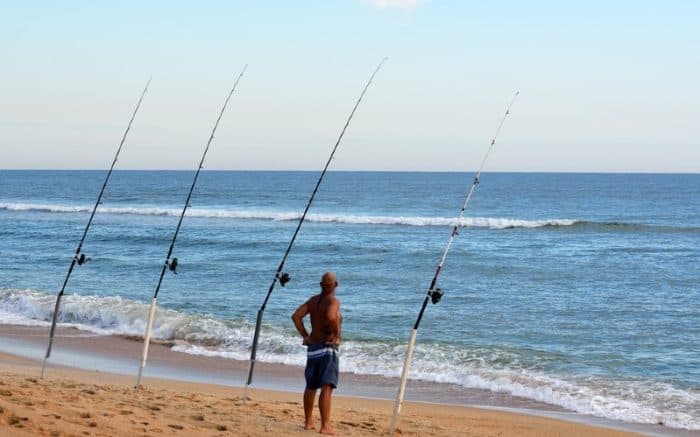
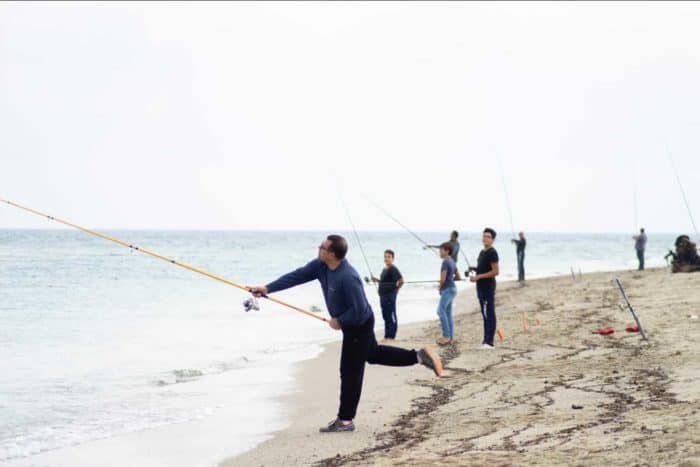
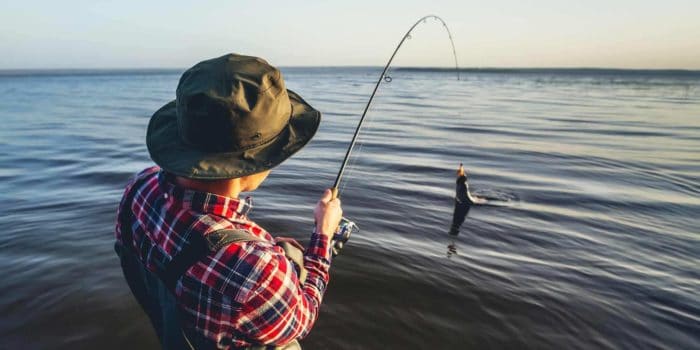
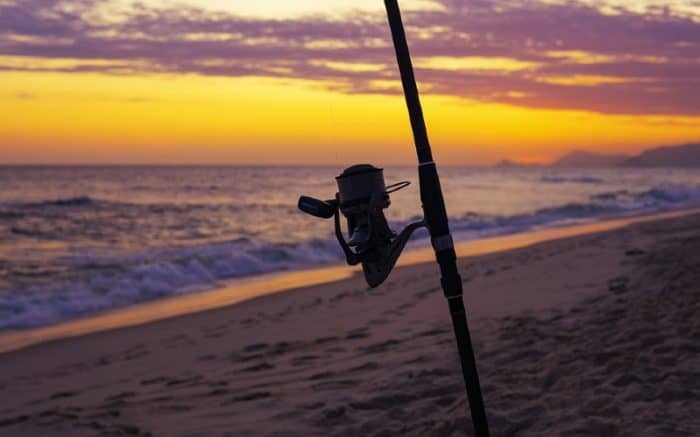
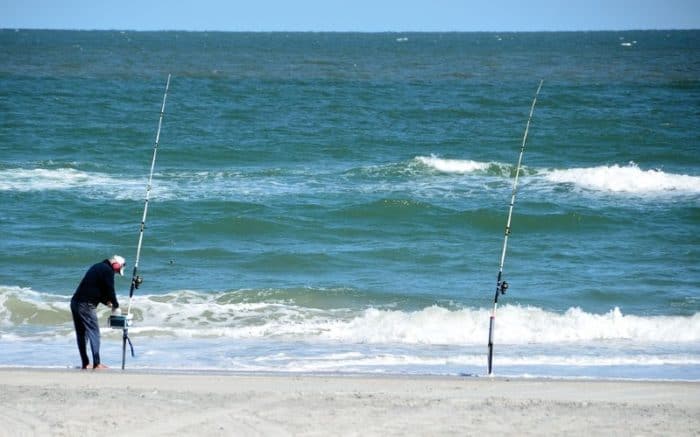
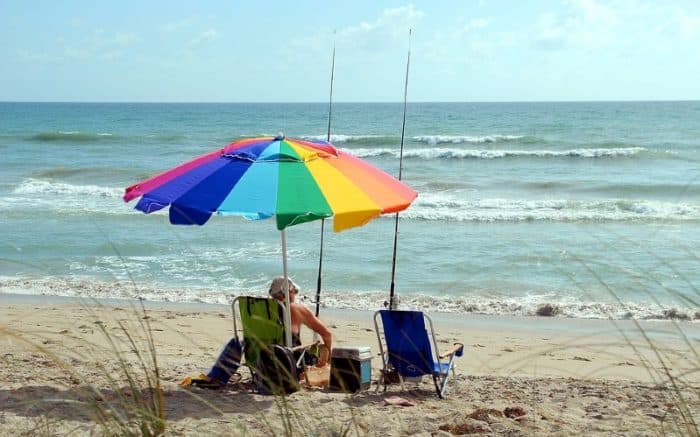
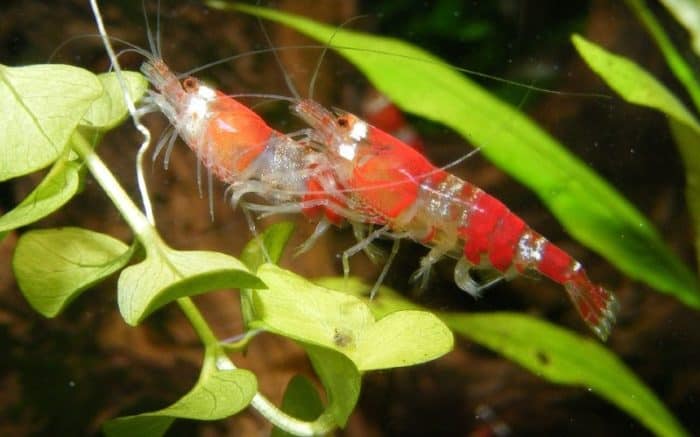
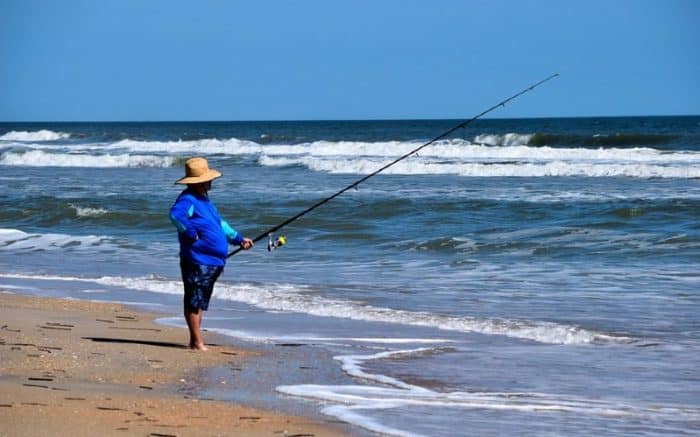
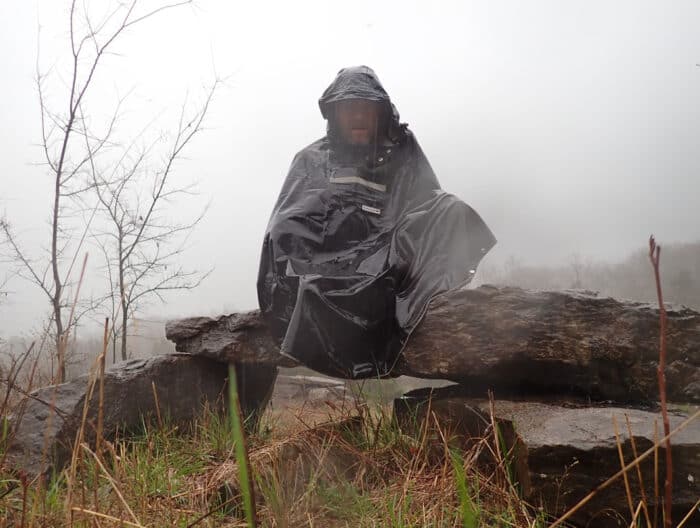
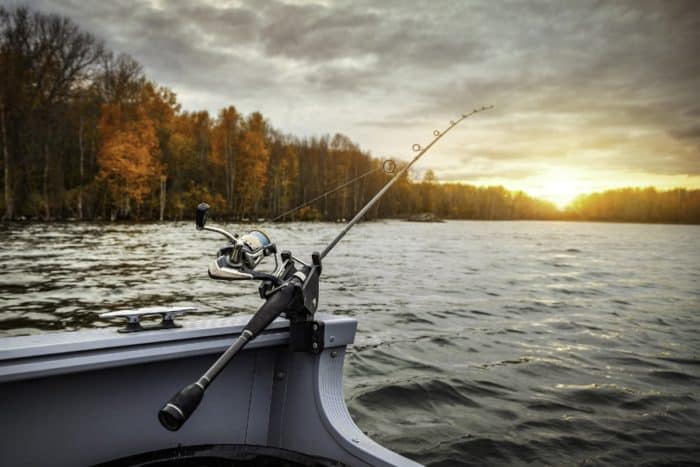
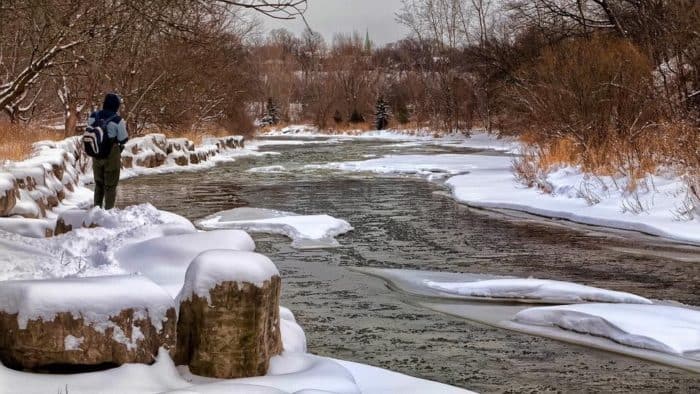
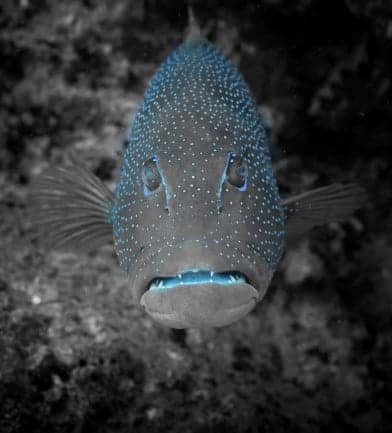








1 Comment
Frank McDougall on November 6, 2021
You forgot us West Coast fisherpeople. Suggest you read: Surf Fishing The Light Line Revolution by Bill Varney.